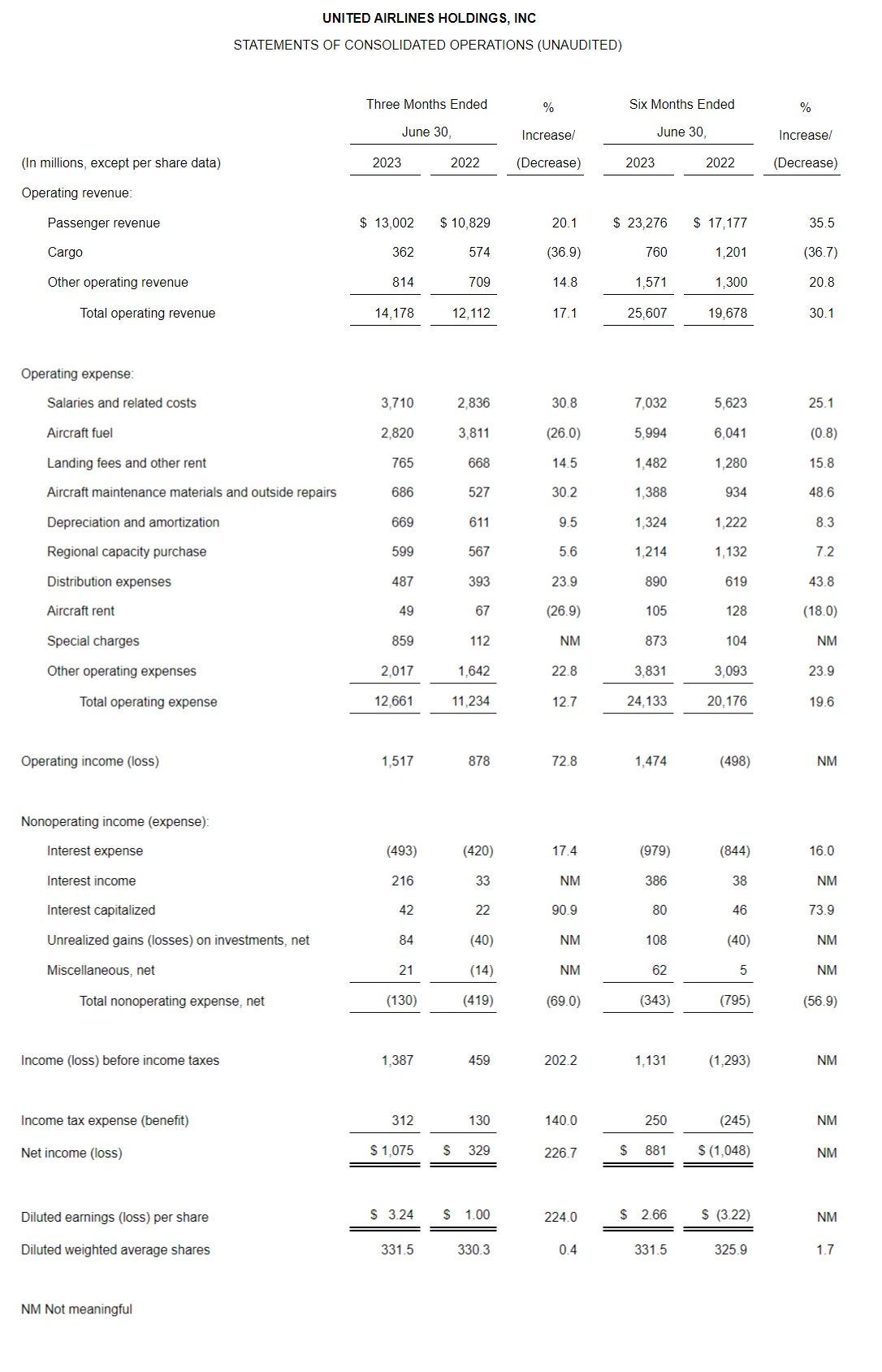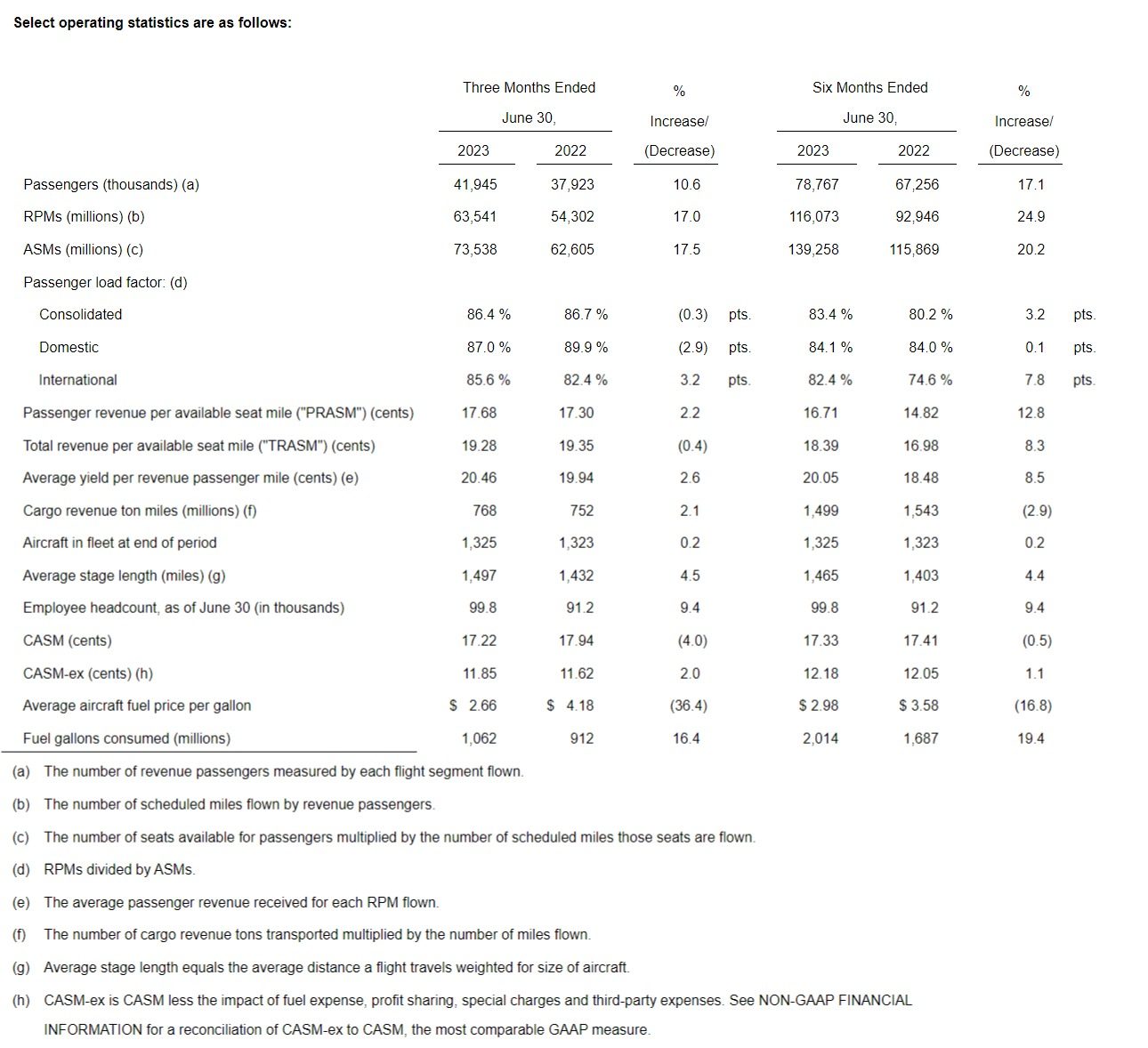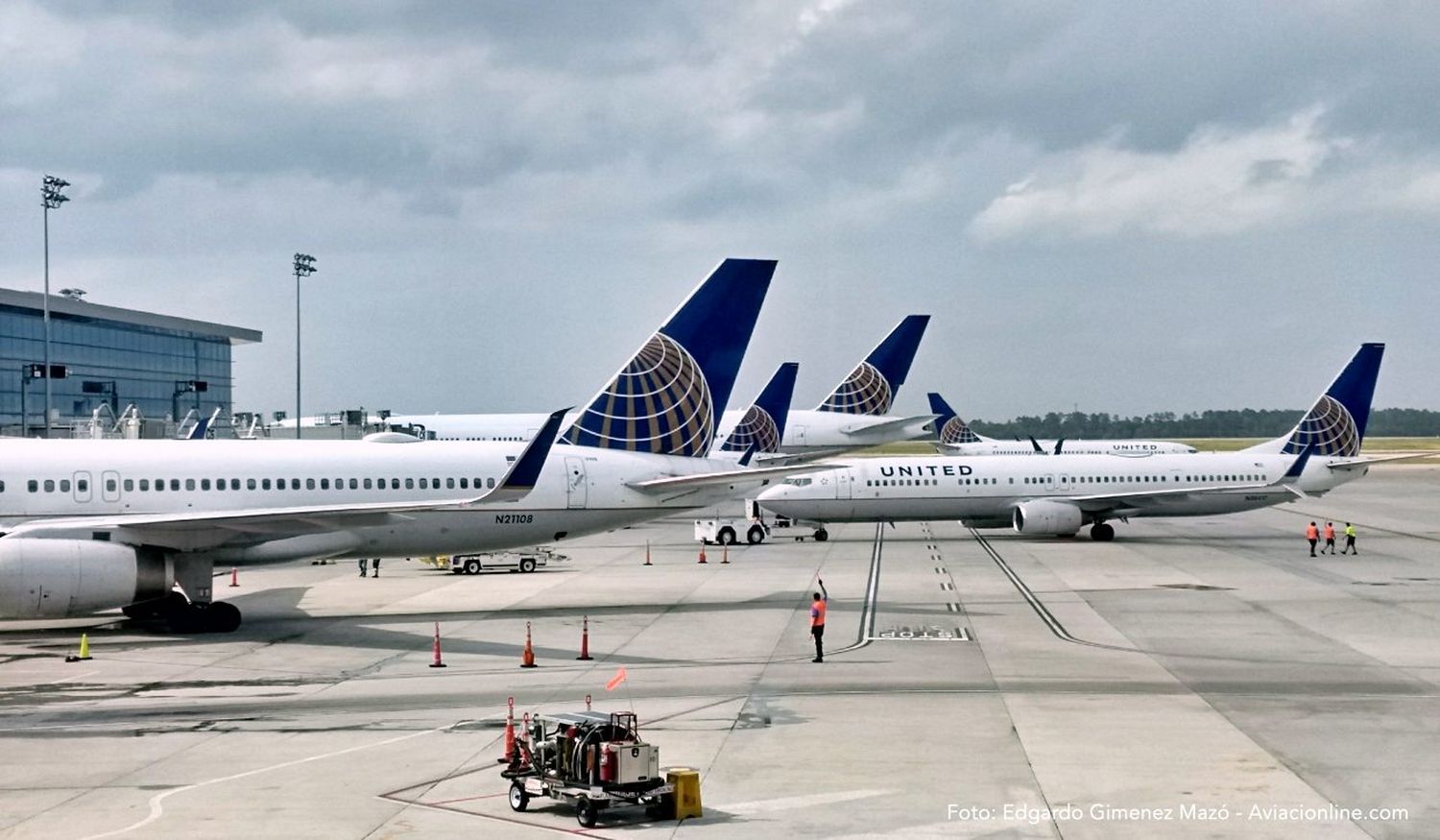United Airlines Reports Robust Q2 2023 Financial Results
United Airlines reported a robust financial performance in the second quarter of 2023, underscoring a remarkable recovery and outlook for the remainder of the year. The company reported quarterly earnings per share of $3.24, an adjusted pre-tax margin of 15.3%, and records on an adjusted basis of earnings per share of $5.03. This financial performance, which exceeds the company’s full-year target for 2023, has strengthened United Airlines’ efforts to restore its balance sheet and reflects, according to the company, the positive impact of the United Next strategy.
United Airlines has attributed its second-quarter performance to the strength of its network. The company reported a return to 2019 levels in domestic margins and an increase in international margins. A significant 27% increase in international capacity was also reported, positioning United as a dominant US flag carrier. Building on this momentum, United Airlines plans to further capitalize on the demand for international travel with new flights to Manila, Hong Kong, Taipei, and Tokyo, enhancing its presence in the Pacific region.
«We have weathered an unprecedented series of events and are now focused on significant improvements, particularly in Newark, to serve our customers better,» said United Airlines CEO Scott Kirby. «The success of United Next is evident in our second-quarter results, and we remain dedicated to executing our strategy to deliver significant benefits for our customers, employees, and shareholders.»
The second quarter also brought a 17.5% increase in capacity and a 17.1% increase in total operating revenue compared to Q2 2022. However, the Total Revenue Per Available Seat Mile (TRASM) dipped by 0.4%, while the Cost Per Available Seat Mile (CASM) reduced by 4.0%. United’s pre-tax income for the quarter was $1.4 billion, with a pre-tax margin of 9.8%. The adjusted net income was reported at $1.7 billion. The company also noted that its trailing twelve months adjusted net debt to adjusted EBITDAR has returned to 2019 levels, standing at 2.4x.

In addition to its financial achievements, United also introduced several operational improvements and enhancements. The company launched a self-service tool in its app, providing passengers with personalized re-booking options, bag tracking information, and meal and hotel vouchers when necessary. The airline also introduced a sustainable aviation fuel (SAF) blend on departing flights from San Francisco International Airport, making it the third airport where United uses SAF.
United’s operational performance saw a significant increase, with a daily average of more than 2,400 flights, marking the highest volume of mainline flights in a quarter in the company’s history.
United Airlines transported 41.9 million passengers in the second quarter of 2023, a figure that is 10.6% higher than the same period in 2022. Capacity, measured in Available Seat Miles (ASM), grew by 17.5%, while demand, measured in Revenue Passenger Miles (RPM), increased by 17%, resulting in a load factor of 86.4% (a decrease of 0.3 percentage points).

With the implementation of the United Next strategy and a firm grip on the market, United Airlines’ outlook for 2023 seems promising. The company is expecting to report full-year adjusted earnings per share of $11 to $12, up from the previous guidance of $10 to $12.
Network
United launched six new international trans-Atlantic routes between Malaga, Spain and Newark/New York, Stockholm, Sweden and Newark/New York, Berlin, Germany and Washington D.C., Barcelona, Spain and Chicago, Shannon, Ireland and Chicago, and Rome, Italy and San Francisco.
The airline also announced the largest South Pacific expansion in aviation history, with direct service to Christchurch, New Zealand from the Continental United States, via San Francisco, and two new routes between Los Angeles and both Auckland, New Zealand and Brisbane, Australia (subject to government approval).


Para comentar, debés estar registradoPor favor, iniciá sesión